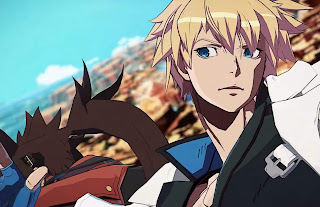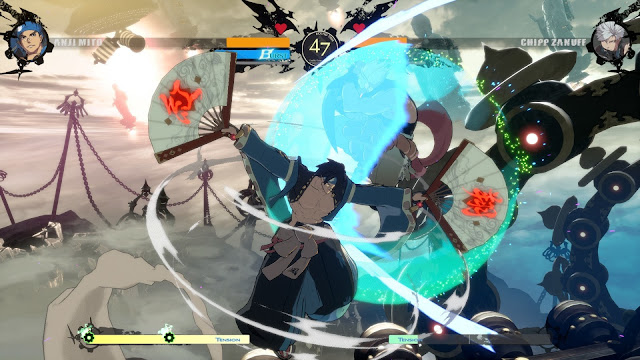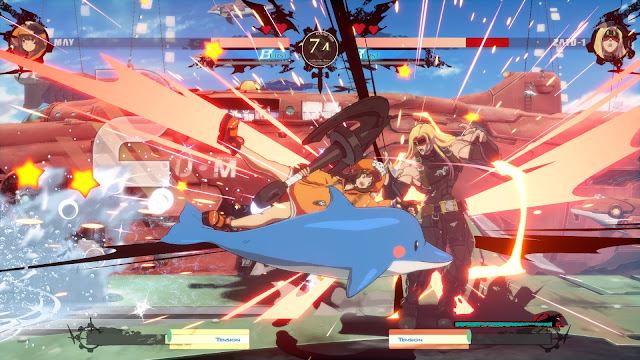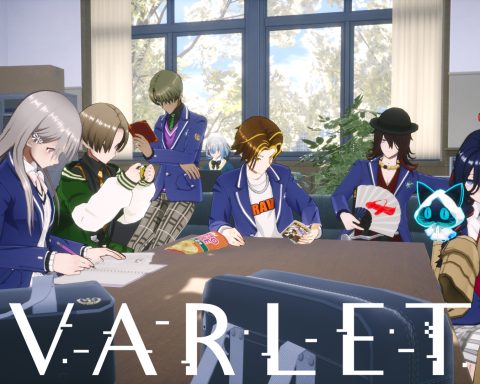I went into Guilty Gear Strive expecting to spend three-quarters of the review talking about Guilty Gear’s best character, Dizzy. I even had an awesome joke planned, since Dizzy wears skin-tight tiny shorts. I was planning on breaking out the old Austin Powers “how do you get into those pants, baby?” line, thus proving what a sparkling wit I have. It would have been such a wonderful opportunity, since I haven’t really talked Dizzy up as much as, say, Dead or Alive’s Marie Rose, but I very much like Dizzy. And then I started playing… and there was no Dizzy. What the hell, Arc System Works?!?! If anything deserves an instant 0/5 score, it’s that jerk move.
Of course, I’m not going to give it 0/5. As much as I enjoy fan service (particularly in fighting games), I am here ultimately for the fighting, and Guilty Gear Strive offers excellent fighting game action. The absence of Dizzy does raise a genuine issue with modern fighting games, though, so to segue seamlessly away from talking about exquisitely good hot pants to get to some serious critical analysis: fighting games are clearly struggling with bloat these days. Guilty Gear Strive’s roster feels thin, at 15 characters. Of course, 15 characters isn’t “thin” at all, and plenty of important, wonderful fighting games have had fewer. I remember getting hundreds of hours out of the original Smash Bros. on N64, which had just 12, and Street Fighter 2 had just eight when it launched in the arcades. The original Mortal Kombat had just seven. But because we’ve got fighting games that count their rosters in multiple dozens now, the character roster equivalent of the Overton Window has shifted, and now we look at a roster of 15 as though it’s inadequate. Particularly when the series has so many beloved characters that that roster of 15 leaves off fan favourites (a.k.a. Dizzy).
That initially disappointing first impression continued when I ducked into the story mode. See, Guilty Gear is well known for offering story modes that don’t actually feature gameplay. They’re functionally animated movies, and they have spectacular presentation values, giving the narratives of this series a resonance that most other fighters lack. Unfortunately, you’re going to need to be really, really familiar with Guilty Gear to get the most out of this one. The developers clearly decided to assume a lot of knowledge, and while the narrative makes sense overall – you can figure out who the goodies and baddies are, and why they’re throwing fists at one another – you’re certainly not going to get everything that you want to out of it without being able to recite lore by heart.
Once I moved past these points of disappointment, though, I found everything about Guilty Gear to be glorious. Most critically of all, the fighting system. Arc System Works is the pinnacle of the 2D brawler, and the development team’s long heritage with the genre shines through beautifully here with every movement, combo, counter and riposte. If you are new to Guilty Gear you are going to button-mash, and that’s totally fine. That’s what the low difficulty level is primed for. Rather than be passive in the most condescending way possible (as happens in a lot of other fighting games), Guilty Gear’s “easy” still involves a lot of movement and energy. It’s just that the AI will fall over to button mashing and over-reliance on simple, basic tricks. As the AI scales, it demands an increasingly complex mastery over the deep and intricate combat systems. It doesn’t just become more spammy itself. It’s so much harder to do AI well this way, where difficulty scales on a technical level, rather than the computer developing superhuman abilities. Arc System Works absolutely nails the difficulty curve.
One challenge with learning the intricacies of Guilty Gear is that it is overwhelmingly focused on aggression. Earning the really powerful specials requires an unrelenting approach to attacking, and you’ll actually go backwards on the track to those specials if you take more than a heartbeat’s second to catch your breath. Consequently, it can naturally feel like the game wants you to button mash, but that’s really quite deceptive, and you can always dip into the multiplayer if you want to be schooled on that. Fair warning; Guilty Gear is a niche fighting game with a hardcore audience. It’s brutal in there, so it’s a better idea to spend time in single player until you’re confident that you can hold your own against the higher-end AI. Once you actually get games going online, however, you’ll discover that the netcode is great and the action is pristine. Arc System Works is, once again, the absolute master of all this.
The action is gorgeous, too. Once you’ve seen a Guilty Gear battle opener, where you get a beautifully cinematic short cut-scene of the character striking a pose as the camera swirls around in dramatic 3D pace, then you’ll wish every fighting game did better in setting the scene or each battle. The battles themselves play out on a 2D plane, but the backgrounds are beautiful, the character animation is unparalleled, and the fireworks are appropriately firey. One thing Arc System Works has never been known for is subtlety, but if you push too far with over-the-top combos and explosives, there’s always the risk that the action tips over and falls into the abyss of “try-hard.” Guilty Gear Strive neatly sidesteps this with just enough restraint to sit on the right side of over-the-top.
As I’ve said a few times in this review so far, Arc System Works are masters of the genre, and Guilty Gear Strive is a showcase of that mastery. It might not be the most comprehensive fighting game out there, and I do think the developers have made a mistake in giving up on drawing new players into the franchise with a story mode that assumes you’ve been playing Guilty Gear for years. However, those quibbles melt away the instant you get into the action itself. There’s no other word to describe it: it’s sublime.










